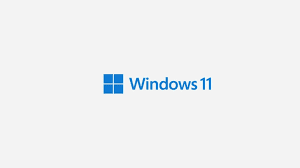This article provides comprehensive and well-detailed Information about Microsoft Windows 11.
Microsoft Windows 11
Windows 10 has been in existence for like 6 years ago. And Windows 11 was unveiled on June 24, 2021, to precede the Windows 10 as a new operating system. Window 11 comes with new features and upgrades compared to Windows 10, like the use of creativity, faster way to connect to people, fast ways of getting information, simple design to increase productivity, increased PC gaming experience, and lots more.
This Microsoft Windows 11 cheat sheet details the operating system’s main features, lists system requirements for the OS, explains how and when to get it, and more.
What is Windows 11?
Windows 11 is the newest Microsoft operating system majorly released for different advantages (to improve creativity and productivity) and to succeed Windows 10.
When was Windows 11 released?
Windows 11 was unveiled on June 24, 2021.
But as of October 5, 2021, Microsoft Windows 11 was released for the use of the public. One of the ways to have Windows 11 on your PC is to upgrade to it, once your system met with all the necessary requirements needed for the upgrade or download. If you already have Windows 10 then you can upgrade it to Windows 11 through the Microsoft’s Windows Insider program by navigating to the update and security settings screen.
Another way is that users take advantage of Windows 11 Installation Assistants in order to avoid Window 10 update and security screen and upgrade directly to Windows 11.
What are the requirements for Windows 11 system?
Users who are willing to install Windows 11 on their PC will probably need a new device (those designed as of 2019). The eligible device should already be running on Windows 10 of version 20H1 or later, then the upgrading is made possible from there. This OS will also be available on new compatible devices soon.
The device to be used for upgrade or installation of Windows 11 must possess the following minimum features:
- Processor: Needs a 1 gigahertz (GHz) or faster with two or more cores on a compatible 64-bit processor or System on a Chip (SoC)
- RAM: Microsoft Windows 11 has 4 GB and more.
- Hard disk space (storage): 64 GB or more storage device. Extra space might be needed by users for downloading and updating.
- System firmware: Unified Extensible Firmware Interface (UEFI) and is also Secure Boot capable.
- Graphics card: Compatible with DirectX 12 or later with Windows Display Driver Model (WDDM) 2.0 driver
- Display: Must have a high-definition (720p) display, i.e. 9-inch or more diagonally, 8 bits per color channel.
- Trusted Platform Module: Needs a TPM of version 2.0
- Internet connection: To be able to update, download and use some features, a stable internet connection is needed. Internet connection and a Microsoft account are needed to set up devices the first time they make use of Microsoft Windows 11 home edition. Also switching devices out of windows 11 home in S mode requires the use of the internet.
What is the Specific Requirement for Certain features on Windows 11?
Some Windows 11 features have increased requirements in addition to the system requirements, which include:
- 5G support: Microsoft Windows 11 requires a 5G-capable modem.
- Auto HDR: Requires a High Dynamic Range (HDR) monitor.
- BitLocker to Go: Available in Windows Pro editions and higher, which requires a USB flash drive.
- Client Hyper-V: Requires a processor with second-level address translation (SLAT) capabilities, which is also available in Windows Pro and above editions.
- Cortana: Requires a microphone and speaker. And Cortana is currently available on Windows 11 for Australia, Brazil, Canada, China, France, Germany, India, Italy, Japan, Mexico, Spain, United Kingdom (U.K), and United States (U.S).
- Direct Storage: Requires an NVMe SSD to store and run games that use the Standard NVM Express Controller driver and a DirectX12 GPU with Shader Model 6.0 support.
- DirectX 12 Ultimate: This is available with supported games and graphics chips.
- Presence: Requires a sensor that can detect human distance from the device or intent to interact with a device.
- Intelligent Video Conferencing: The feature requires a video camera, microphone, and speaker for audio output.
- Multiple Voice Assistant (MVA): This feature requires the use of a microphone and speaker.
- Snap: Three-column layouts require a screen that is 1,920 effective pixels or greater in width.
- Mute and Unmute from Taskbar: Requires the use of a video camera, microphone, and speaker (audio output) from the taskbar. The app must be compatible with features to enable global mute/unmute.
- Spatial Sound: This requires the support of software and hardware.
- Microsoft Teams: This requires the use of a video camera, microphone, and speaker (audio output).
- Touch: This requires a screen or monitor that supports multi-touch.
- Two-factor authentication: This also requires the use of a PIN, biometric (fingerprint reader or illuminated infrared camera) or a phone enabled with Wi-Fi or Bluetooth.
- Voice Typing: This requires a PC with a microphone.
- Wake on Voice: Requires Modern Standby power model and microphone.
- Wi-Fi 6E: Requires new WLAN IHV hardware and driver and a Wi-Fi 6E capable AP/router.
- Windows Hello: Requires a fingerprint reader for authenticating biometrics or a camera configured for near-infrared (IR) imaging. Devices that are without biometric sensors can use Windows Hello with a PIN or portable Microsoft compatible security key.
- Windows Projection: Microsoft windows 11 requires a display adapter that supports Windows Display Driver Model (WDDM) 2.0 and a Wi-Fi adapter that supports Wi-Fi Direct.
Like and comment if you find this article useful and don’t forget to share with your loved ones.
Also, see
Thanks for reading.
